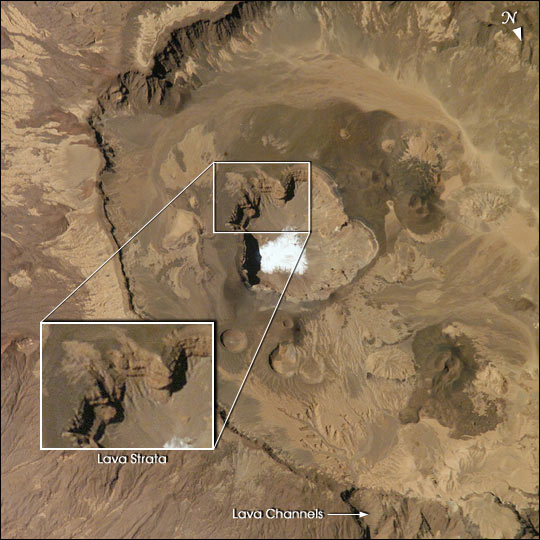


Emi Koussi is a high volcano that lies at the south end of the Tibesti Mountains in the central Sahara in northern Chad. The volcano is one of several in the Tibesti massif, and reaches 3415 m in altitude, rising 2.3 km above the surrounding sandstone plains. The volcano is 65 km wide.
This view of the Emi Koussi caldera was taken with an 800 mm lens on November 11, 2002. It is detailed to the point that it doesn’t include the entire 10-km diameter of the caldera, but reveals individual lava strata within the walls of the summit cliffs. Nested within the main caldera is a smaller crater that contains white salts of a dry lake at its lowest point. Here too, strata are visible in the walls of the smaller crater. The smaller crater is surrounded by a region of darker rocks—a geologically young dome of lava studded with several small circular volcanic vents.
Emi Koussi has been used as a close analog to the famous Martian volcano Elysium Mons. One of the most important morphological differences between volcanoes on Mars and Earth is the widespread furrowing of the surface due to flowing water on terrestrial volcanoes. The furrows are shallow valleys. Larger channels have a different origin. Major channels can be seen on volcanoes on both planets and indicate low points in caldera rims where lava spilled out of pre-collapse craters.
Astronaut photograph ISS005-E-20451 was provided by the Earth Sciences and Image Analysis Laboratory at Johnson Space Center. Additional images taken by astronauts and cosmonauts can be viewed at the NASA-JSC Gateway to Astronaut Photography of Earth.